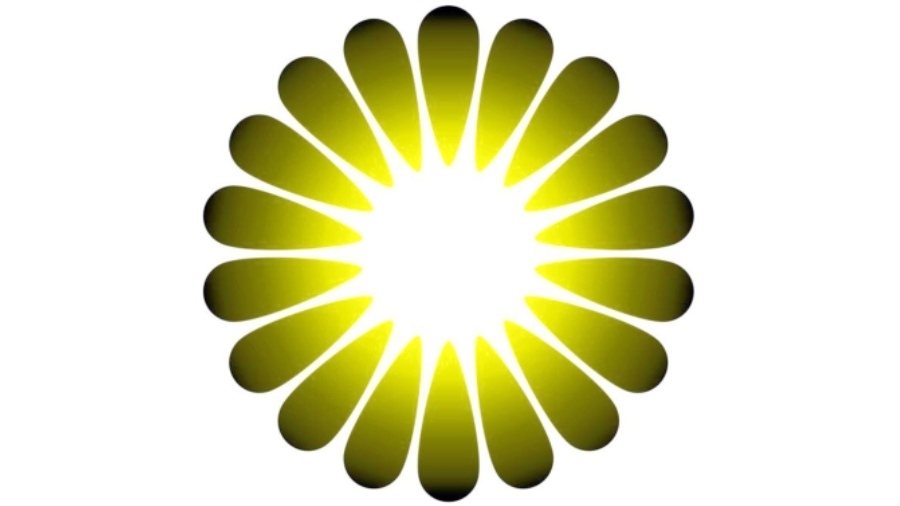Do not be alarmed. The hole you see here is not really moving, growing or expanding. And the darkness will not swallow you.
This image is actually static, and has much to teach us about how our brains and eyes see the world. In a study published in the Frontiers in Human Neuroscience, psychologists tested this illusion on 50 men and women with normal vision, and, using an infrared eye tracker, found that the greater a participant’s response to the illusion, the stronger the pupil dilation response. They also discovered that some people — perhaps even you — can’t see it.
In your eyes, the pupils subconsciously adjust to the light in your surroundings, dilating when it is dark to try to capture more light, and constricting when it is bright to prevent overexposure. When you look at this illusion, the hole is not darkening. But the perception that it darkened was enough to make your pupils respond.
“There is no reason, per se, that the pupil should change in this situation because nothing is changing in the world,” said Bruno Laeng, a psychology professor at the University of Oslo, Norway, and an author of the study. “But something clearly has changed inside the mind.”
The researchers hypothesise that the illusion works because the gradient on the central hole makes it look as if the viewer is entering a dark hole or tunnel, prompting the participants’ pupils to dilate. They also found the illusion’s effect varied against different colours and was strongest when the black hole was atop a magenta background.

The Asahi illusion that causes people’s pupils to constrict
But not all participants were taken in by the illusion, so if you have no idea what is going on in these images, you are not alone: 14 per cent of participants in the study did not report seeing it. Laeng proposes that a minority may, perhaps based on past experience, see the image in only two dimensions.
These latest results comport with a 2012 study in which Laeng and his colleagues found that the Asahi illusion, which resembles the growing glare of sunlight partly obstructed by trees or clouds, also caused people’s pupils to constrict.
The new study was “clever” for showing “a physiological indication of the response to the perceived expansion of the dark,” said Dale Purves, a neurobiologist who studies visual perception at Duke University, US. However, “there are much more striking effects” that could have been used to demonstrate the pupillary response.
But this study gets at a fundamental problem all animals, including humans, deal with, Purves said. While a camera can directly measure the amount of light it is picking up, he said, “We don’t have that physical apparatus, we have no measurement of the world.”
Instead, we have “an eye with a brain attached”, Laeng said. When the eye is confronted with a scene, your brain “is analysing what it’s seeing and building up, constructing a possible scenario and adapting to it,” he said.
Another famous example is the Dress, a viral photograph that inspired spirited debates in 2015 as to whether an item of clothing was white and gold or blue and black. Laeng thinks it “is probably the greatest experiment ever in human history, so far at least.”
With the dress, as with the expanding hole illusion, our brains are making assumptions about what is seen based on past experience. Evolutionary history plays a role, too.
“The information we get from the world is quite indeterminate,” Laeng said. “The brain goes into a constant guessing mode, we have to sort of come up with the best solution, but there are several possibilities for the same type of input.”
Illusions such as the expanding hole feed into the debate over whether all perception is, fundamentally, an illusion. “Everything we perceive is inconsistent with the physical reality...” Purves said. “Everything we see, whether it’s line length, colour, brightness, you name it.”
You aren’t really being tricked; instead, illusions help reveal what our mind’s eye is up to by showcasing mismatches between what we see and what’s really out there.
One hypothesis, Laeng said, is the brain is trying to predict and show us the future. It takes time for a stimulus, like light, to reach our sensory organs, which need to send it to the brain, which in turn needs to process, make sense of, and do something with that information. And by the time our brain catches up with the present, time has already moved forward, and the world has changed.
To get around this, the brain may be constantly trying to predict a little bit into the future in order to perceive the present.
Seeing the expanding hole illusion is not a flaw, but a feature: it’s the result of your brain’s strategy to navigate an uncertain, ever-changing world, most likely built up from evolutionary history to ultimately help humanity survive. It is adaptive to predict the future by, say, dilating your pupils in anticipation of going somewhere dark.
“It’s a very philosophical question,” Laeng said. “We do live in a virtual reality, but it’s a pragmatically useful virtual reality.”
So, the world you are seeing is an illusion, but don’t be alarmed.
NYTNS










